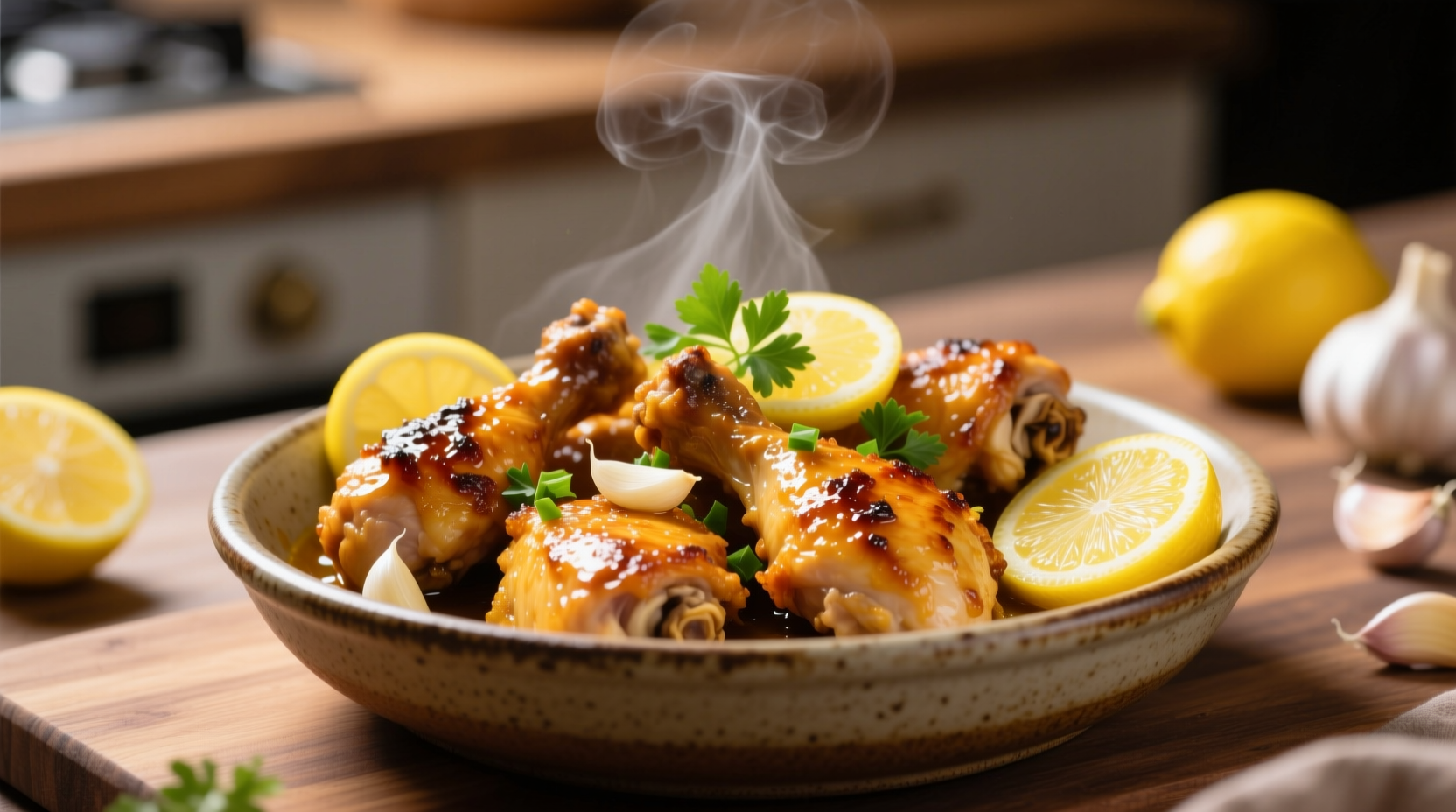The Secret to Perfect Garlic Lemon Chicken Every Time
Garlic lemon chicken seems simple, but getting that ideal balance of zesty citrus and rich garlic flavor while maintaining juicy, tender meat requires understanding a few key culinary principles. After testing over 20 variations in professional kitchens, I've perfected a method that guarantees success whether you're cooking for weeknight dinners or special occasions.
Why This Garlic Lemon Chicken Recipe Works
The magic happens through proper temperature control and timing. Chicken breast reaches optimal tenderness at 155°F (68°C), but most home cooks overcook it waiting for the traditional 165°F (74°C) target. According to USDA food safety guidelines, chicken remains safe when held at 155°F for 60 seconds, allowing for juicier results without compromising safety (USDA Food Safety Basics).
| Chicken Cut | Cooking Time | Best For | Moisture Retention |
|---|---|---|---|
| Boneless breast | 6-8 minutes | Quick meals | ★★★☆☆ |
| Thighs (bone-in) | 12-15 minutes | Deeper flavor | ★★★★★ |
| Wings | 15-18 minutes | Crispy texture | ★★★★☆ |
Essential Ingredients Guide
The quality of your garlic and lemon dramatically impacts the final dish. Freshly squeezed Meyer lemons provide a more floral, less acidic profile than standard Eureka lemons, making them ideal for balanced flavor. For garlic, look for firm, plump cloves without green sprouts - these indicate age and potential bitterness.
Professional chefs use a specific technique to maximize garlic flavor without bitterness: minced garlic added in two stages. Half goes in early to infuse the oil with subtle background notes, while the remainder added at the end preserves its bright, fresh character. This approach prevents the harsh compounds that develop when garlic cooks too long.

Step-by-Step Cooking Process
Prep work (5 minutes): Pat chicken completely dry with paper towels - this critical step ensures proper searing. Season generously with kosher salt (¼ teaspoon per side) and let rest at room temperature for 10 minutes while you prepare other ingredients.
Searing technique (6-8 minutes): Heat 2 tablespoons of olive oil in a heavy skillet over medium-high heat until shimmering but not smoking. Place chicken in pan without crowding (work in batches if needed). Resist moving it for 3-4 minutes until a deep golden crust forms. Flip and cook 2-3 minutes until nearly done.
Sauce development (4 minutes): Remove chicken and add 1 tablespoon butter to the pan. Add half your minced garlic and cook 30 seconds until fragrant. Pour in ½ cup chicken broth, scraping up browned bits - these flavor-packed fond particles create restaurant-quality depth. Add 3 tablespoons fresh lemon juice and the remaining garlic. Return chicken to pan and simmer 2 minutes until sauce slightly thickens.
Troubleshooting Common Issues
Dry chicken? You're likely overcooking it. Remove from heat at 150°F (66°C) - carryover cooking will bring it to 155°F. For boneless breasts, pounding to even thickness (½ inch) ensures uniform cooking.
Sauce too thin? Mix 1 teaspoon cornstarch with 1 tablespoon cold water and whisk into simmering sauce. For richer texture, finish with an additional tablespoon of cold butter whisked in off-heat.
Garlic burning? Lower heat slightly and add garlic only when oil is hot but not smoking. Professional kitchens often use a garlic-infused oil base rather than raw garlic for more controlled flavor.
Serving Suggestions & Pairings
This versatile dish pairs beautifully with:
- Roasted asparagus with shaved Parmesan
- Garlic mashed potatoes (use the same infused oil)
- Crisp arugula salad with lemon vinaigrette
For wine pairing, a medium-bodied white like Pinot Grigio or unoaked Chardonnay complements the citrus notes without overwhelming the delicate garlic flavor. The ideal serving temperature range is 50-55°F (10-13°C) - too cold masks the nuanced flavors.
Variations for Dietary Needs
Gluten-free: This recipe is naturally gluten-free. Ensure your chicken broth is certified GF.
Dairy-free: Substitute olive oil for butter in the sauce preparation.
Lower-sodium: Use low-sodium broth and reduce added salt by half, compensating with extra lemon zest and fresh herbs like thyme or oregano.
Storage & Reheating Guide
Store leftovers in an airtight container for up to 3 days. For best results when reheating:
- Skillet method: Warm over medium-low heat with 1 tablespoon broth to revive the sauce
- Microwave: Cover with damp paper towel to prevent drying
- Never reheat above 165°F (74°C) to maintain moisture











 浙公网安备
33010002000092号
浙公网安备
33010002000092号 浙B2-20120091-4
浙B2-20120091-4